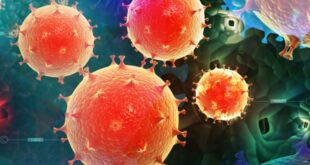Bird flu almost killed this teen. It’s a cautionary tale for Trump officials.
A 17-year-old Thai boy, who contracted the H5N1 avian influenza virus from poultry in his village, had a cardiac arrest and lung failure after catching the virus. Doctors placed him on a ventilator, and he had to be kept in a medically induced coma for over two weeks. The teen eventually survived, but his story serves as a cautionary tale for officials in the Trump administration.
According to the Centers for Disease Control and Prevention, the H5N1 virus is a highly pathogenic strain of avian influenza that has the potential to cause a global pandemic. The teen’s experience demonstrates the seriousness of the threat posed by bird flu and the importance of preparedness and response strategies.
The teen’s harrowing ordeal
The boy’s symptoms began with a high fever and cough, which quickly escalated to severe breathing difficulties. He was admitted to a hospital in critical condition, where he was diagnosed with H5N1 bird flu. Doctors initiated aggressive treatment, including antiviral medications and respiratory support.
Unfortunately, the boy’s condition continued to deteriorate, and he suffered a cardiac arrest. Doctors were able to resuscitate him, but his lungs were severely damaged, leading to acute respiratory distress syndrome. He was placed on a ventilator and given medication to keep him sedated and prevent further lung damage.
The importance of vigilance and preparedness
The teen’s miraculous recovery highlights the importance of vigilant surveillance and early detection of emerging infectious diseases. Countries must have robust public health systems in place to detect and respond to outbreaks quickly and effectively.
For the Trump administration, the teen’s story serves as a reminder of the critical need for strong leadership and coordination in addressing public health crises. The administration must prioritize investments in pandemic preparedness, including vaccine development, stockpiling of medical supplies, and training of healthcare workers.
Furthermore, officials must engage with international partners to enhance global cooperation in monitoring and controlling infectious diseases. The H5N1 virus is a transboundary threat that requires collaborative action to prevent its spread and mitigate its impact on public health.
Conclusion
The teen’s battle with bird flu serves as a cautionary tale for Trump officials and policymakers worldwide. It underscores the importance of proactive measures in combating infectious diseases and the need for constant vigilance in monitoring emerging threats.
By learning from the teen’s experience and prioritizing preparedness and response efforts, officials can better protect public health and mitigate the risks posed by deadly pathogens like the H5N1 virus.
 Mind Uncharted Explore. Discover. Learn.
Mind Uncharted Explore. Discover. Learn.



